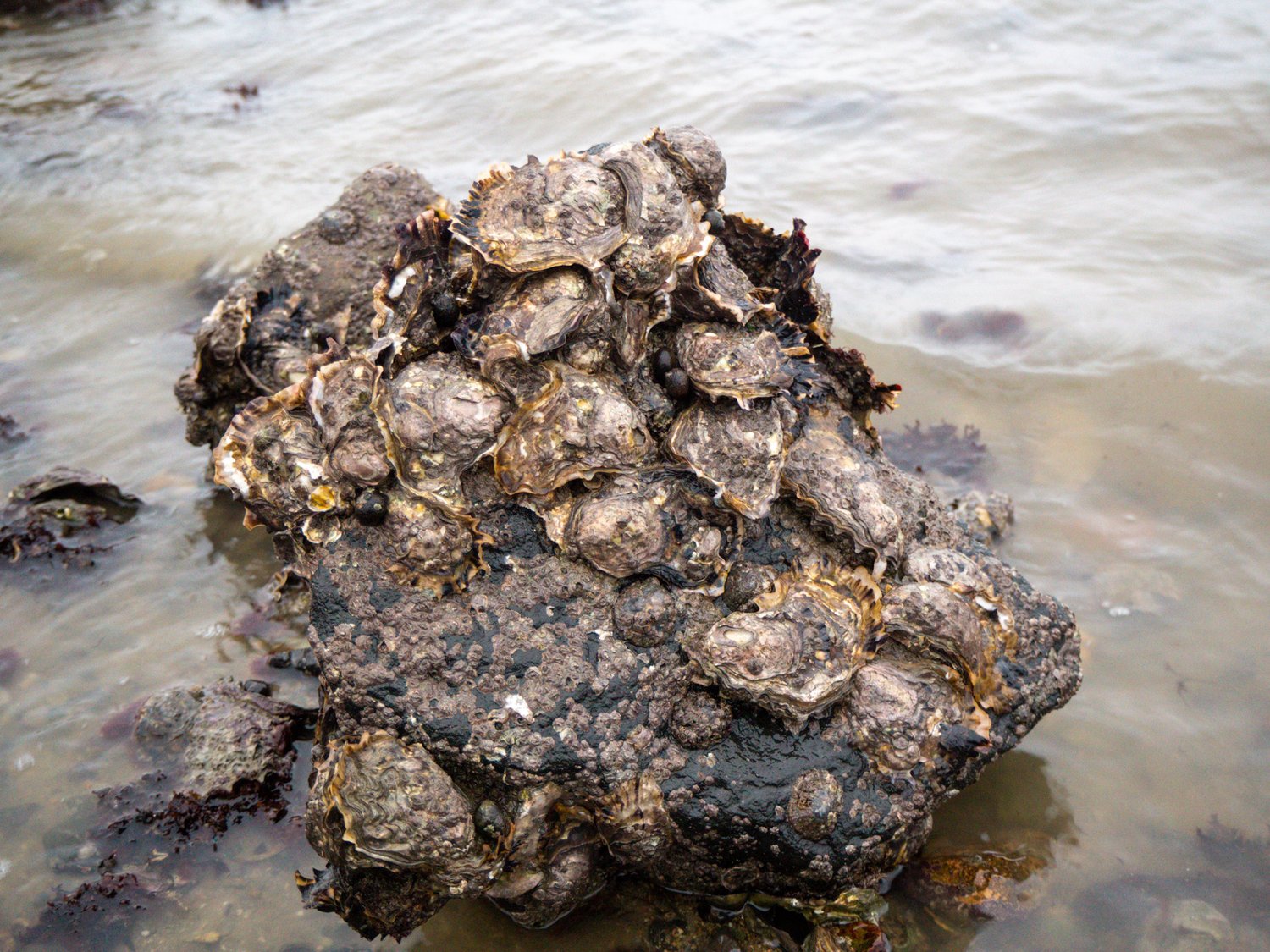
Oysters are not very charismatic, they don’t look cute on camera and you can’t cuddle them nicely. That’s probably why they don’t usually get a lot of attention.
This is a bit sad because despite all of this, they are some of the coolest creatures in the ocean.
We have learnt to love them and we are sure that everyone will love them too when we tell you the amazing jobs they do and how important they are for our lives.

Over the past decades, we’ve extracted fossil fuels from the ground in an almost uncontrolled manner. Now we are aware that we’ve gone too far and we need to put carbon back into the ground into the fossil storage.
However, carbon can also be kept out of the atmosphere and out of our oceans in a different way: storing it in life.
That’s right. We all know that trees and plants store carbon. Even some seaweeds like kelp absorb CO2 more effectively than trees, keeping carbon from being dissolved in our water causing acidification, and also out of our atmosphere.
But did you know that animals like oysters and other shellfish also store carbon? In fact, carbon is one of the main components that form their shells as they grow and develop. Not only that, but oysters are also the motor of the nitrogen cycle and do other important jobs for the environment like filtering the water.
Are you starting to love them already?

Every year 200 million cubic meters of material is dredged from the coasts and deltas in Europe.
This marine engineering efforts have saved many homes from ending up underwater, but unfortunately they emit astonishing amounts of carbon dioxide through both the fuel needed to perform the action, and also because carbon is also emitted due to damaging the seafloor.
In 2021 it was shown that seabed dredging emitted more carbon than the entire aviation industry – one billion tonnes annually.
Due to engineering activities, the highly managed river delta in the south of The Netherlands now suffers from “Sand Hunger”, the erosion of sandbanks and flattening off of river channels.
Now huge efforts to dredge these areas are needed each year to maintain shipping channels and also to save intertidal feeding grounds for birds.

Instead, oyster reefs could be strategically placed in these areas to reduce the need for dredging and thereby reduce emissions from this industry, improving biodiversity by saving precious intertidal areas from disappearing.
So it is fair to say that the impacts of oysters ripple not only just through the water, but also across our land and skies.

Make a measurable difference for the ocean today.
You can now adopt a Mother Reef and help restore 100 oysters!

